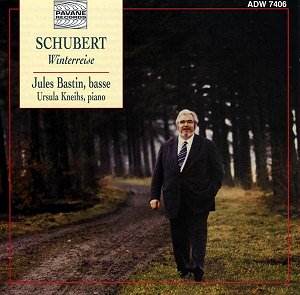 Composer: Joachim Raff
Composer: Joachim Raff
Works: Piano Trio Op. 112 in G, Piano Trio Op. 155 in A minor, Trio Opus 8
Performers: [Performers not specified in the data provided]
Recording: Germany, 2000? (DDD)
Label: CPO 999 800-2 [64.42]
Few composers have navigated the treacherous waters of the 19th-century musical landscape with the grace and complexity of Joachim Raff. Often overshadowed by the titanic figures of Brahms and Wagner, Raff’s works reveal a rich tapestry of Romantic expression that merits a deeper examination. This recording presents two of his piano trios—Op. 112 and Op. 155—alongside a less frequently encountered Trio Opus 8, illuminating the evolution of his compositional voice.
The Piano Trio Op. 112 in G major opens with a leisurely allegro that envelops the listener in a warm, mellow atmosphere. The performers here deserve commendation for their ability to maintain a buoyant spirit without succumbing to the cloying sentimentality that can plague similar works from this period. The slow movement is particularly noteworthy; Raff skillfully transforms simple chords into something grand and fresh, culminating in an enchanting piano solo that gracefully leads into a rapturous cello melody. However, one must note that the movement stretches its thematic material beyond its natural limits, at times veering into monotony. While the music itself is undeniably lovely, a tighter structural focus might have enhanced its overall impact.
In contrast, Raff’s Piano Trio Op. 155 in A minor showcases a darker, more contemplative atmosphere. This later work reflects a maturation in Raff’s style, replete with emotional depth and a complexity that speaks to the trials of his era. The piano part fluctuates between virtuosic flourishes and lyrical passages, but, much like its predecessor, suffers from an excessive length in some movements, which occasionally dilutes its emotional resonance. The superlative scherzo stands out as a high point, brimming with energy and wit that embodies the quintessence of Raff’s romanticism.
The recording quality is commendable, with a clarity that allows the nuances of the ensemble to shine through. Each instrument occupies its own space within the sonic landscape, affording the listener an immersive experience. The engineering captures the subtleties of dynamics and articulations, making for an engaging listening experience. While the performers embody a commendable dedication to the material, there is a slight tendency toward overemphasizing emotional content, which may detract from the inherent structural integrity of the compositions.
In light of the historical context that surrounds Raff’s works, it is essential to view them not just in the light of their contemporaries but also as part of a broader narrative of Romantic music. While Brahms’ trios remain the benchmarks against which many are measured, Raff’s contributions—especially in these recordings—exhibit a unique voice that deserves recognition. Each trio demonstrates a compelling blend of lyrical beauty and structural ambition, albeit with moments that could benefit from greater conciseness. These interpretations, while occasionally overindulgent, ultimately serve to introduce a modern audience to the richness of Raff’s chamber music legacy. The overall experience is one of discovery and appreciation for a composer who, despite historical neglect, possesses a profound and enduring artistic vision.



